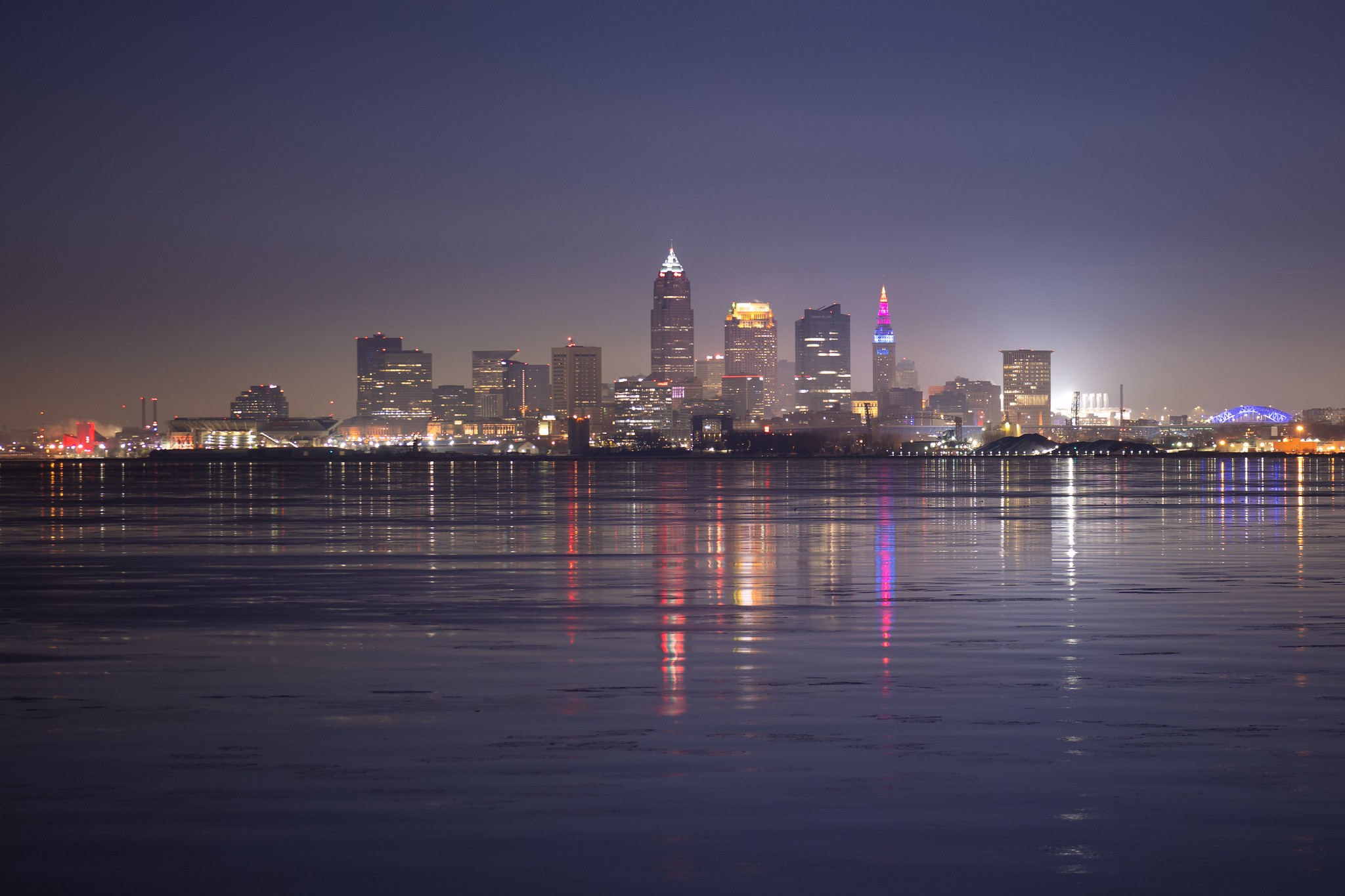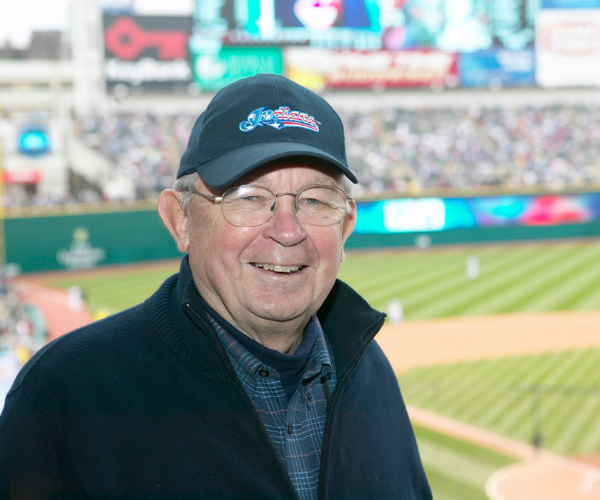Reimagining Cleveland’s Lakefront With a 5-Mile-Long Redevelopment: Commentary
From parks to high-rises, much of what Cleveland wants for its lakefront can’t happen until Burke is gone.
by Ken Prendergast, NEOTrans | Nov. 10, 2025 | 12:00 PM

NEOTrans
This article was published through an exclusive content-sharing agreement with neo-trans.blog.
Burke Lakefront Airport is an obstacle. You can’t build a decent-sized park on the lakefront because of it. You can’t build lakefront high-rises because of it. And you can’t access much of the water’s edge near Downtown Cleveland because of it and other nearby barriers, Huntington Bank Field, the Shoreway and the Port of Cleveland.
But if Burke is removed from the picture, suddenly a lot of things become possible. They include things that haven’t been discussed before. Or if they have, they were doomed by a lack of space and/or a lack funds to overcome that lack of space.
Cleveland Mayor Justin Bibb and Cuyahoga County Executive Chris Ronayne asked members of Congress last week for help in bypassing the Federal Aviation Administration’s (FAA) red tape in closing Burke. To them, it’s a big piece of the mayor’s Shore-to-Core-to-Shore vision of connecting downtown with its two waterfronts — the Cuyahoga River and Lake Erie.
Removing Burke is a tall order. It’s a federally designated reliever airport that keeps Cleveland Hopkins International Airport clear of general aviation operations. Among several other reliever airports, Burke has the region’s best facilities — longest runway, best terminal, largest tarmac and second-most hangar space (trailing only Cuyahoga County Airport).
The FAA isn’t going to approve degrading a major metropolitan area’s aviation infrastructure unless another reliever airport like those in Cuyahoga, Lorain or Lake County offer the same or better facilities. Perhaps one or more of the relievers could be upgraded, which may soon be under way.
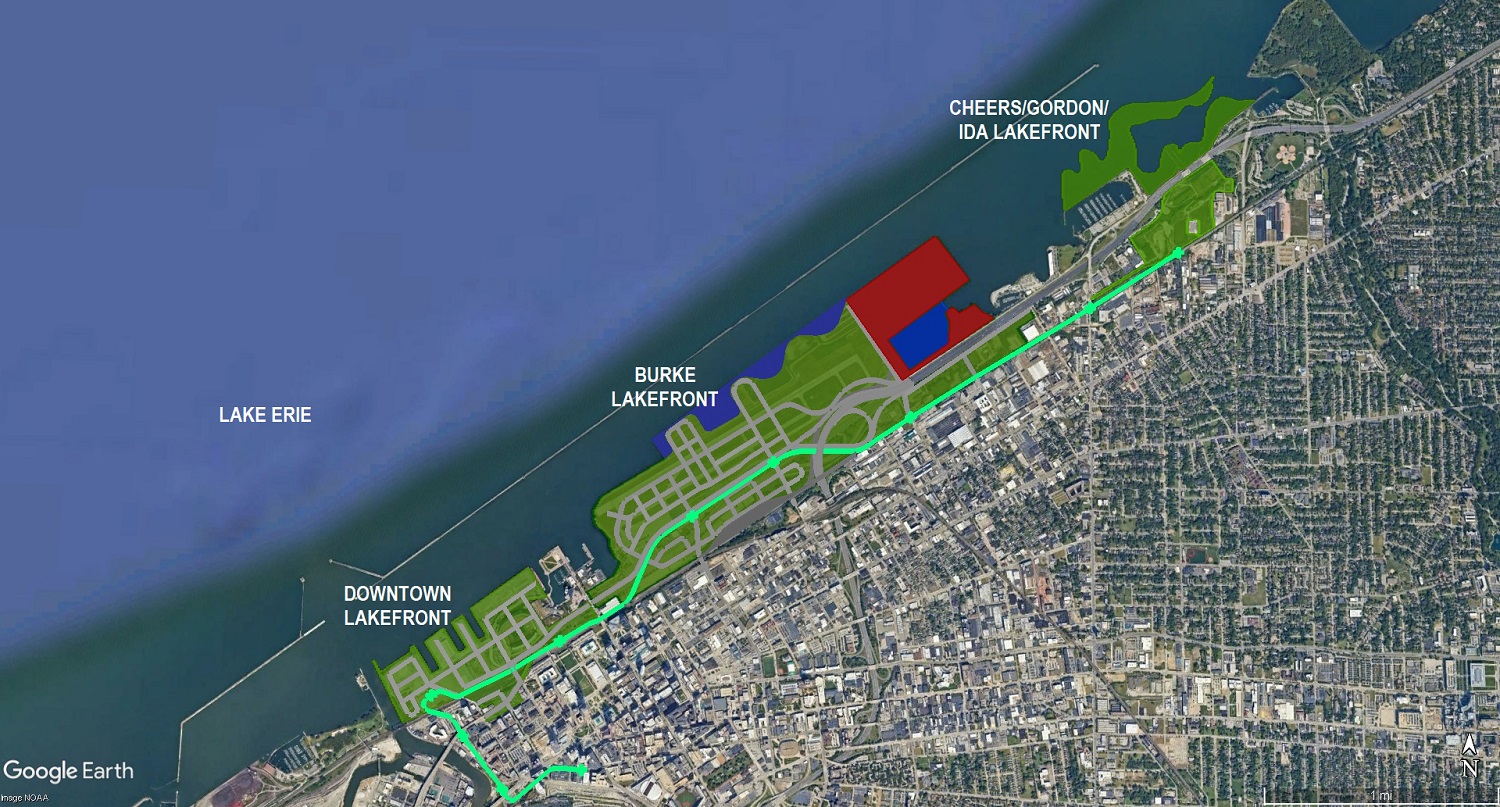
That is, unless an act of Congress directs the FAA to close it. Even then, the FAA could push back. But it is less likely to object if the region’s reliever airports are upgraded — or at least plans are progressing to do so.
Burke does offer Downtown Cleveland a unique corporate amenity though few take advantage of it. Sherwin-Williams, for example, keeps its fleet of corporate jets at Hopkins.
Even Cleveland Browns’ owners Dee and Jimmy Haslam want to help the city close Burke. And they are offering $100 million to help with lakefront development.
Why do they want to do that when their Cleveland-area home, located in Bratenahl, is only 12 minutes from Burke? Because, per Google maps, it’s just six minutes farther for them to reach Cuyahoga County Airport. For many, Burke is redundant. But lakefront access is in short supply.
A study commissioned by the city and released last year showed that closing Burke and redeveloping it offers more economic benefits than keeping Burke open. To start with, Burke loses $1 million a year for the city each year.
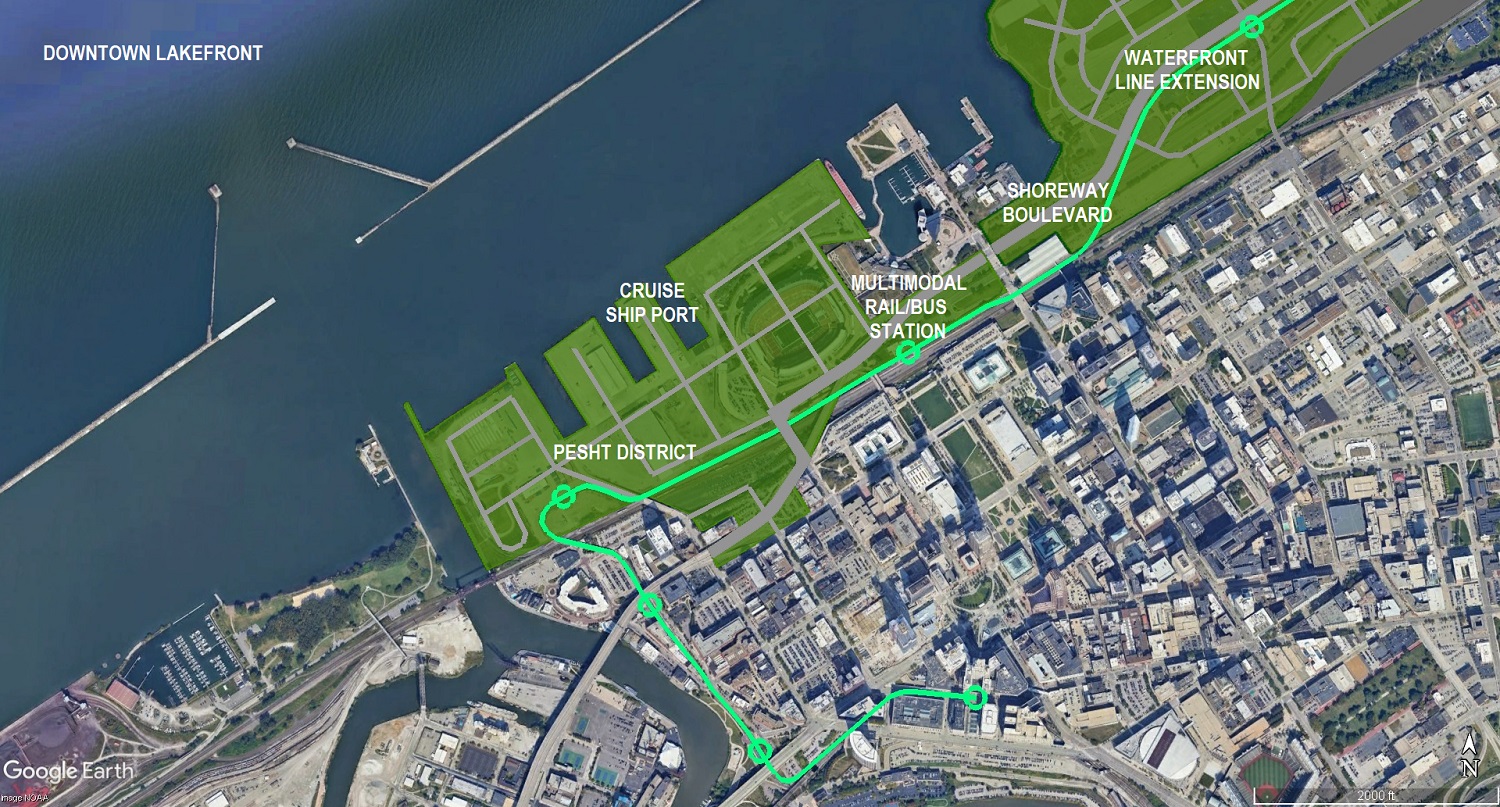
One-third of the benefits offered by Burke involve the annual Cleveland National Air Show. But losing a lakefront airport doesn’t mean losing an air show.
Chicago offers a lakefront Air and Water Show despite closing Meigs Field in 2003 to create Northerly Island Park. Meigs wasn’t Chicagoland’s best reliever which is why the FAA’s $3 million penalty against the city for closing it was so small.
Instead, planes involved in Chicago’s downtown air show fly out of Gary-Chicago International Airport, 20 miles away. Gary’s airport has 20,000-25,000 annual aircraft operations per year. That’s almost identical to the number of annual aircraft operations at Cuyahoga County Airport, located just 10 miles from Burke.
There’s no reason why the lakefront air show has to end without Burke. And it can be augmented by water events too, like military ships, water rescue demonstrations, fire boat demonstrations, and/or jet ski and high-speed boat races inside the breakwall. You could even have high-speed boats race airplanes!
Another concern about closing Burke is what to do with its 450 acres which is all landfill on a former lake bed. Some of it is not clean soil. It is not easy to develop in Cleveland with its lack of development-ready sites, low real estate prices and sluggish economy. But those historical trends could be reversing, with real estate prices rising and job growth increasing.
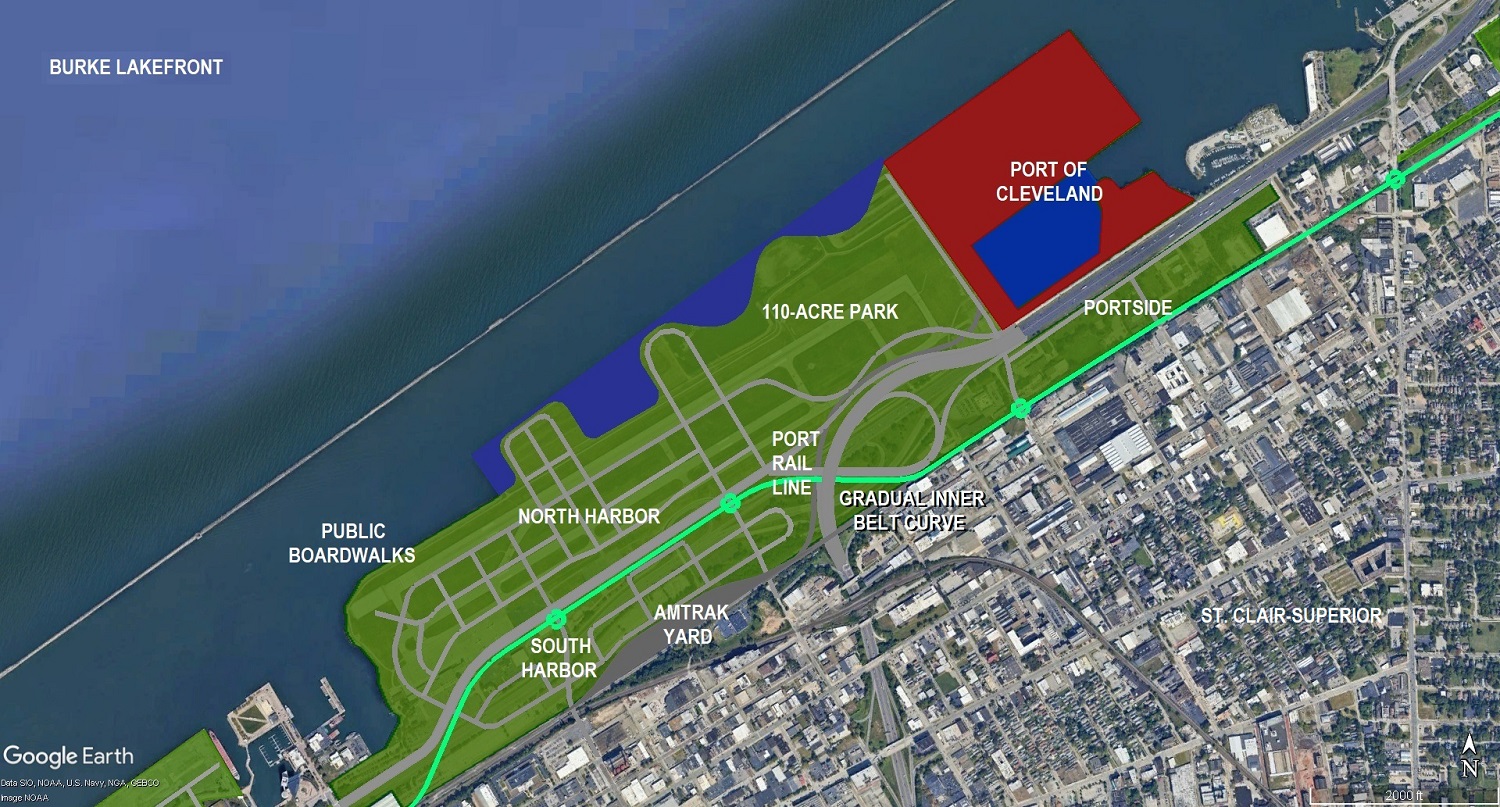
There are several uses that that could quickly eat up more than half of Burke’s land, two of which have yet to enter the public discourse. Those are — easing Dead Man’s Curve on Interstate 90 (the Inner Belt), a large park and relocating the Port of Cleveland.
Fifteen years ago, the Cleveland-Cuyahoga County Port Authority postponed a $500 million plan during the Great Recession to build a new, 200-acre port island offshore from the north end of East 55th Street, then vacate and redevelop its 80-acre port downtown.
The rationale was that it needed a new Confined Disposal Facility to deposit sand and mud dredged from the bottom of the Cleveland harbor and the navigable portion of the Cuyahoga River to ensure a 27-foot draft for big ships. So as long as it’s depositing these materials at a new location, why not use that location to get the port off valuable, developable land downtown?
But after the recession ended, port officials decided to stay put downtown and expand Gordon Park with more lakefront land while building a new island for recreational use. This new plan would also help protect Interstate 90 just west of Gordon Park from the rising waters and battering waves of Lake Erie resulting from climate change.
Called the Cleveland Harbor Eastern Embayment Resilience Strategy (CHEERS), newly dredged material would be used to expand Gordon Park. And to expedite its expansion, some of the existing Confined Disposal Facility at the northeast corner of Burke would be relocated under this $300 million, 20-year project for which federal permitting is underway, however slowly.
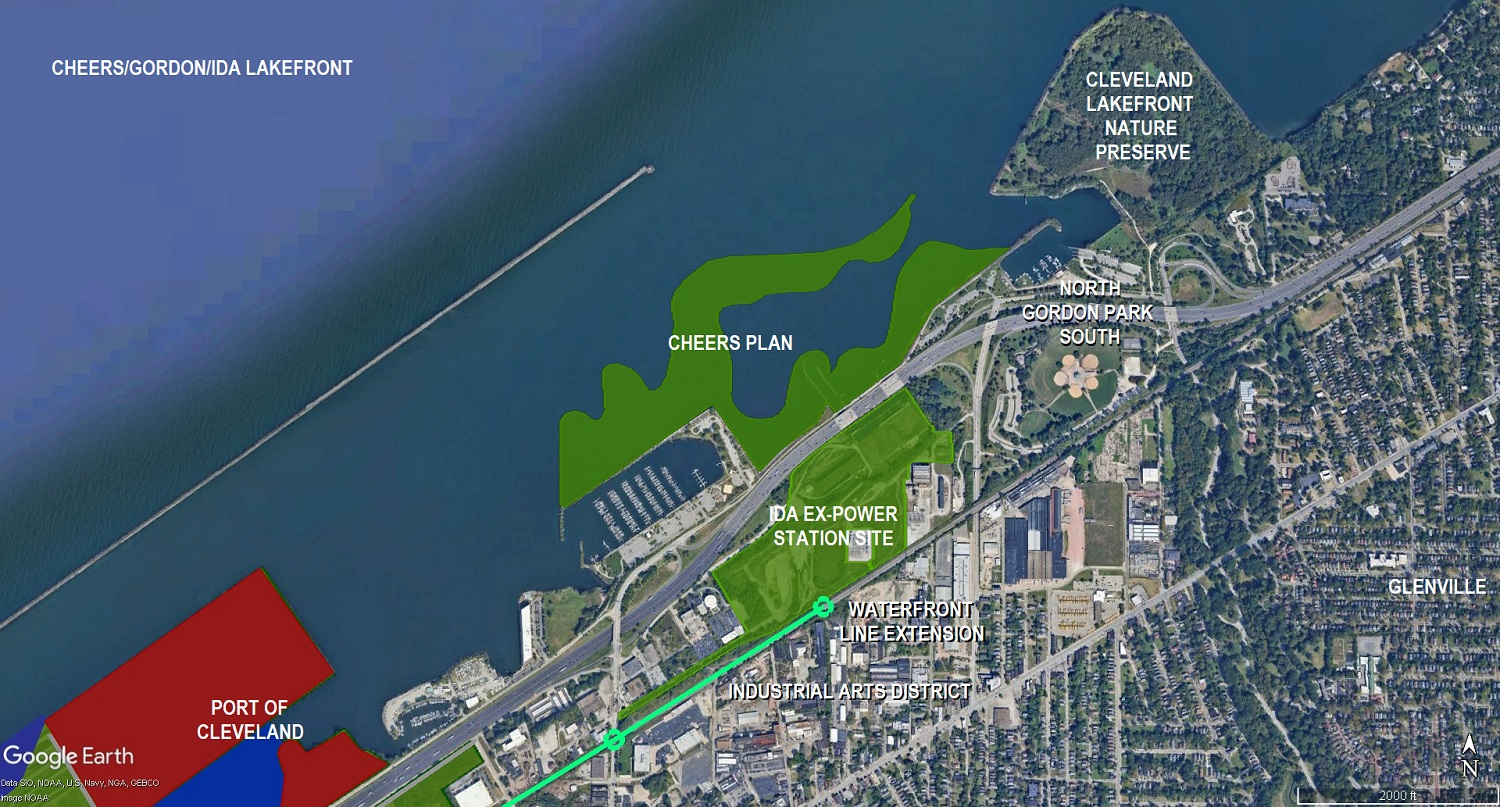
Consideration should be given to relocating the port from downtown to a 100-acre site at the northeast corner of Burke that could be expanded, all for less expense than the prior port relocation plan. And the Burke port site would also allow ships to access it from three sides while still inside the protective breakwall.
That site could permit eight Seawaymax ships (the largest “salty” vessels from the Atlantic Ocean to fit through the St. Lawrence Seaway) to dock the entirety of their ships next to Cleveland’s port facilities simultaneously. Only two can do that now downtown. A port roadway and rail line could be extended to the new port site without building a new causeway.
Freeing up 80 acres of lakefront land downtown to extend the street grid to the water’s edge would poetically echo plans by Stark Enterprises from 20 years ago. Bob Stark envisioned building what he called “Pesht” by the water to augment historic “Buda,” alluding to the two parts of the Hungarian capital that were ultimately united.
Developing this portion of the lakefront, no longer vertically constrained by the nearby presence of Burke, could supercharge the city’s lakefront redevelopment plans for which $284 million is in hand for infrastructure to improve lakefront access.
Before the Jackson Administration rudely booted him off the lakefront in favor of the Haslams, Cumberland Development President Richard Pace said the FAA’s regulations were stifling. When he planned volleyball courts north of the Nuevo Modern Mexican & Tequila Bar at North Coast Harbor, he said the FAA asked him how high the volleyballs would go.
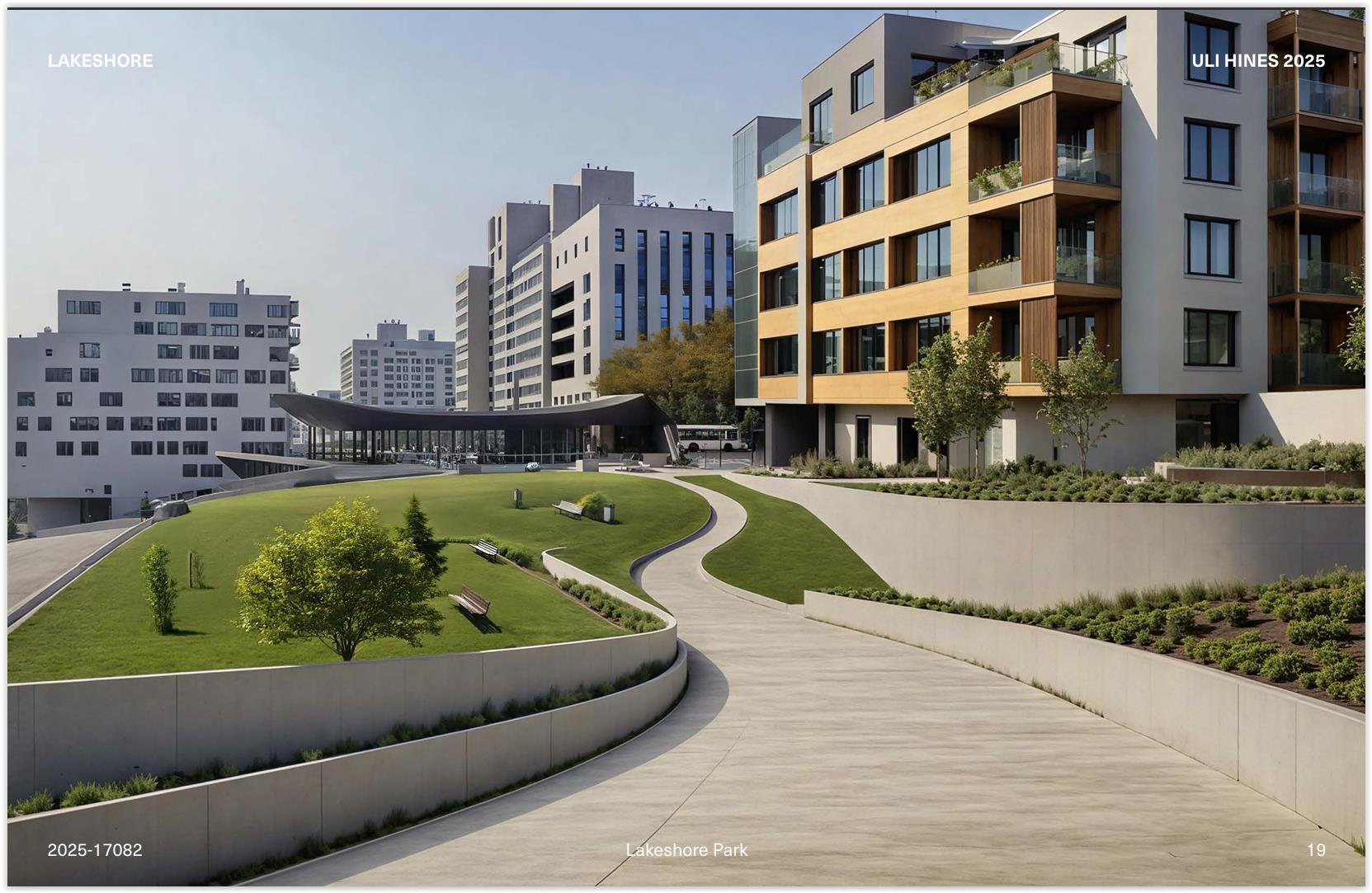
The Haslams soon learned what Pace had, and instead sought to put a new domed stadium at Burke. When supporting that heavy structure on reclaimed lake land proved too costly, the Haslams looked at two sites just east of downtown, and ultimately to Brook Park.
When the Browns leave the lakefront sometime after 2028, the stadium will be demolished. Requests for qualifications (RFQ) of prospective developers of 50 acres of lakefront land, including the current site of Huntington Bank Field, were to be decided Oct. 24. Nothing has been announced.
Two developers who pursued the RFQ spoke to NEOtrans on the condition of anonymity. While they didn’t make the cut, both said the city wants to see a significant, mixed-use development here — something that may not be possible with Burke next door.
One described it as “a large-ticket development, with apartments and commercial/retail.” The other said “the city is going in a more traditional direction and the property will likely become a nice park and apartment buildings — but nothing which will change the current trajectory of the region.”
Removing Burke can change the trajectory. It would open a continuous, five-mile-long development district along the edge of a Great Lake next to a major city’s downtown, lined with boardwalks and public access, plus a 110-acre park on the Burke site.
On the 200-acre west half of Burke, I’m dubbing North Harbor, would be opened to low- and mid-rise mixed-use development. South of the Shoreway Boulevard and an extended Waterfront Line, the municipal parking lots would be redeveloped with affordable, workforce and senior housing called South Harbor.
The Shoreway Boulevard would meet Interstate 90 at a new, more gentle curve that replaces Dead Man’s Curve. But instead of requiring major excavations, relocating two railroad bridges, and costing $500 million like the Ohio Department of Transportation’s (ODOT) Construction Contract Group (CCG) masterplan shows, the gentler curve would be on Burke’s land.
ODOT District 12’s Public Information Officer Brent Kovacs was asked if it was possible to route I-90 on a portion of Burke’s land, if the city, county and Congress are successful is getting the FAA to close the airport. His answer was vague, apparently so as not to close all doors of opportunity.
“ODOT is coordinating with the project stakeholders, including the City of Cleveland and Burke Lakefront Airport,” Kovacs said. “Currently the CCG4 Innerbelt Curve project is in preliminary engineering development and is moving forward with the intent to minimize impacts to all project stakeholders.”
And, of course, being a transit guy, I proposed extending the light-rail Waterfront Line 3 miles to the east, ending at the 62-acre former Lake Shore Power Plant site. That site was acquired in 2023 by an affiliate of IDA Power LLC of New York but its intentions beyond cleaning up the property aren’t known.
It was the subject of an international design competition among 83 university architectural and urban design programs led by the Urban Land Institute. All of those programs envisioned the site as a high-density, transformational, mixed-use development on Cleveland’s lakefront. Many of the contestants envisioned extending the Waterfront Line to it.
Five miles of lakefront redevelopment is a fantastically heavy lift for any administration. That lift is so heavy that it will likely outlast Bibb’s time at City Hall, even if he stays at 601 Lakeside for decades although it’s no secret he has higher aspirations.
In fact, it’s probable that the lakefront development portion that’s the subject of the RFQ will probably outlast his administration. That’s why Bibb urged creation of the North Coast Waterfront Development Corporation (NCWDC) so that the goal of lakefront development doesn’t end when Bibb’s term does, whenever that may be.
For the nonprofit NCWDC to oversee such a large area will probably require amending its legal jurisdiction which currently does not include the existing Port of Cleveland or Burke Lakefront Airport.
Neither of those were in the City of Cleveland’s redevelopment picture when the NCWDC was launched two years ago. To change the trajectory of this city and region, they ought to be.
For more updates about Cleveland, sign up for our Cleveland Magazine Daily newsletter, delivered to your inbox six times a week.
Cleveland Magazine is also available in print, publishing 12 times a year with immersive features, helpful guides and beautiful photography and design.

Ken Prendergast, NEOTrans
Ken Prendergast is a local professional journalist who loves and cares about Cleveland, its history and its development. He has worked as a journalist for more than three decades for publications such as NEOtrans, Sun Newspapers, Ohio Passenger Rail News, Passenger Transport, and others. He also provided consulting services to transportation agencies, real estate firms, port authorities and nonprofit organizations. He runs NEOtrans Blog covers the Greater Cleveland region’s economic, development, real estate, construction and transportation news since 2011. His content is published on Cleveland Magazine as part of an exclusive sharing agreement.
Trending
-
1
-
2
-
3
-
4
-
5

